I'm building a Twin-T active bandpass filter as shown on this schematic:

simulate this circuit – Schematic created using CircuitLab
My aim is to build a simple drum-like synthesizer that rings at a stable frequency sinusoid, when you give it an impulse. Furthermore it should give the same length of impulse response at different frequencies. Such that, it doesn't matter what note you tune it to, the note length would always be the same.
The circuit is adapted from here: original circuit. I excluded the additional circuitry that adds a frequency sweep, since I need a constant frequency oscillation. (I want to add an exponential converter instead of R1 for voltage controlled frequency.)
When I run a transient analysis in LTSpice for different tuning resistor values, not touching the Q trim pot, I get a nice ringing of equal duration at different oscillation frequencies (see the picture below).
However, when I build the circuit on breadboard, the ringing dies out very quickly with increasing frequencies, as shown on the scope pictures below.
 breadboard: 100K tuning resistor.
breadboard: 100K tuning resistor.
 breadboard: 22K tuning resistor.
breadboard: 22K tuning resistor.
 breadboard: 6.8K tuning resistor.
breadboard: 6.8K tuning resistor.
Why is that? Is there a way to compensate for that, to get the response like in the simulation?
My supply voltage is +-15V, with a buffered voltage divider as the ground point. I already tried different Opamps with 3Mhz and 35Mhz gain-bandwidth product. I didn't notice a difference there.
Thanks in advance!
[EDIT:] I played around with the caps and resistor values, imitating 10% off precision components in the similation. I still get the same nice high Q response at high frequencies in the analysis results. Is LTSpice reliable in this regard? I also matched the resistors R3 and R4 to 0.1% on the breadboard. I could not measure a change in Q response.
